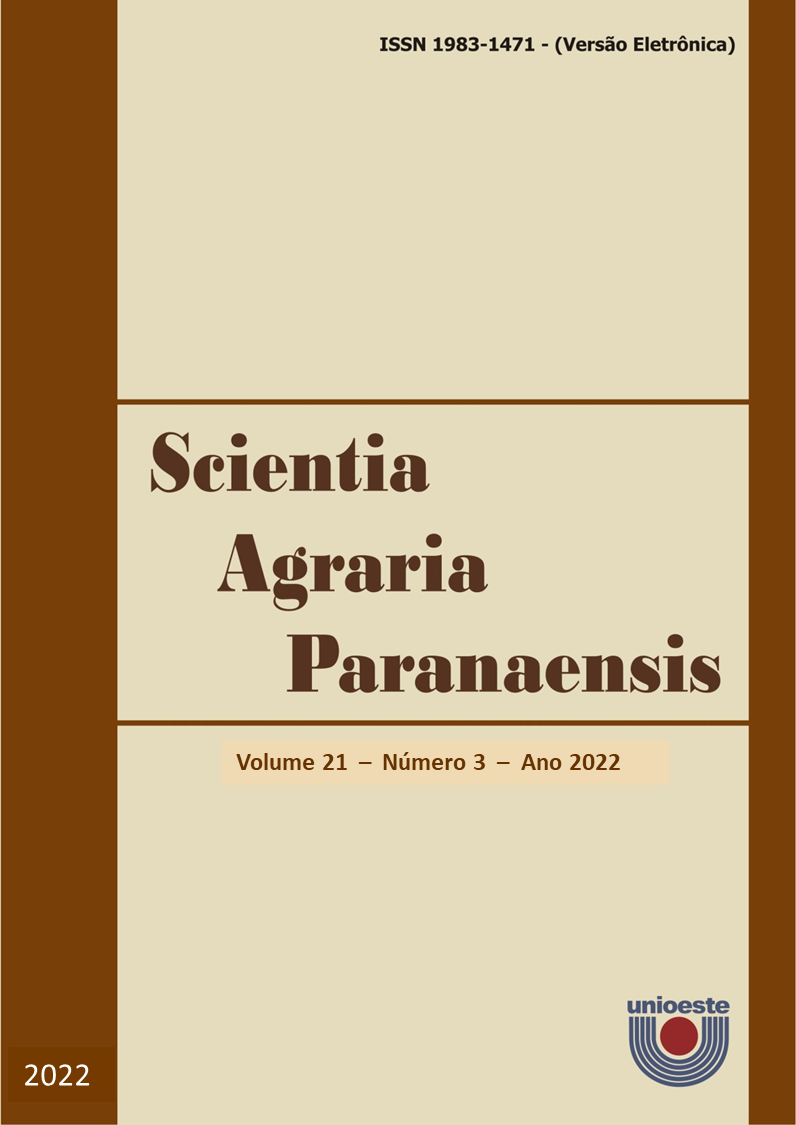Humic substances in the production and development of Marandu and Mombaça grass
TEOR DE PROTEINA BRUTA, FIBRA EM DETERGENTE NEUTRO, PRODUÇÃO DE MATÉRIA SECA AÉREA E RADICULAR DO CAPIM MARANDU E CAPIM MOMBAÇA SOB EFEITO DE DIFERENTES DOSES SUBSTÂNCIAS HÚMICAS
DOI:
https://doi.org/10.18188/sap.v21i3.29638Resumo
The effects of humic substances in plants are related to the increase in the absorption of nutrients, due to the influence on the permeability of the cell membrane and the chelating power, as well as photosynthesis, the formation of ATP, amino acids and proteins. In order to optimize the use of humic substances for tropical grasses, it was carried out in pots in a greenhouse. Humic substances were extracted from vermicompost. For the application of humic substances, a humic solution was produced by diluting the concentrated solution in water at concentrations of 0; 12.5; 25 and 50%, and the solution was applied with a hand sprayer (300 mL). The experimental design used was completely randomized in a 2 x 4 factorial scheme (two forages, four SH concentrations), with 5 replications. At 45 days, the plants were cut, separating them into shoots and roots. The samples were removed, for determination of dry matter, crude protein and neutral detergent fiber (NDF). The leaves and roots of the samples were, after weighing (for green matter) and before drying, digitalized to determine leaf area and leaf area index. The objective was to evaluate the leaf area, shoot and root yield of Brachiaria brizantha (Syn Urochloa brizantha), cv. Marandu and Panicum maximum (Syn Megathyrsus maximus) cv. Mombaça subjected to different concentrations of humic substances. The best concentrations of humic substances for better aerial part yield were 50% for cv. Mombaça and 25% for cv. Marandu, but considering that the roots must have the necessary organic reserves for a new regrowth. The best concentrations of humic substances for better root yield were 50% for cv. Mombaça and 25% for cv. Marandu.
Downloads
Publicado
Como Citar
Edição
Seção
Licença
Aviso de Direito Autoral Creative Commons
Política para Periódicos de Acesso Livre
Autores que publicam nesta revista concordam com os seguintes termos:
1. Autores mantém os direitos autorais e concedem à revista o direito de primeira publicação, com o trabalho simultaneamente licenciado sob a Licença Creative Commons Attribution que permite o compartilhamento do trabalho com reconhecimento da autoria e publicação inicial nesta revista.2. Autores têm autorização para assumir contratos adicionais separadamente, para distribuição não-exclusiva da versão do trabalho publicada nesta revista (ex.: publicar em repositório institucional ou como capítulo de livro), com reconhecimento de autoria e publicação inicial nesta revista.
3. Autores têm permissão e são estimulados a publicar e distribuir seu trabalho online (ex.: em repositórios institucionais ou na sua página pessoal) a qualquer ponto antes ou durante o processo editorial, já que isso pode gerar alterações produtivas, bem como aumentar o impacto e a citação do trabalho publicado (Veja O Efeito do Acesso Livre).
Licença Creative Commons
Esta obra está licenciada com uma Licença Creative Commons Atribuição-NãoComercial-CompartilhaIgual 4.0 Internacional, o que permite compartilhar, copiar, distribuir, exibir, reproduzir, a totalidade ou partes desde que não tenha objetivo comercial e sejam citados os autores e a fonte.


